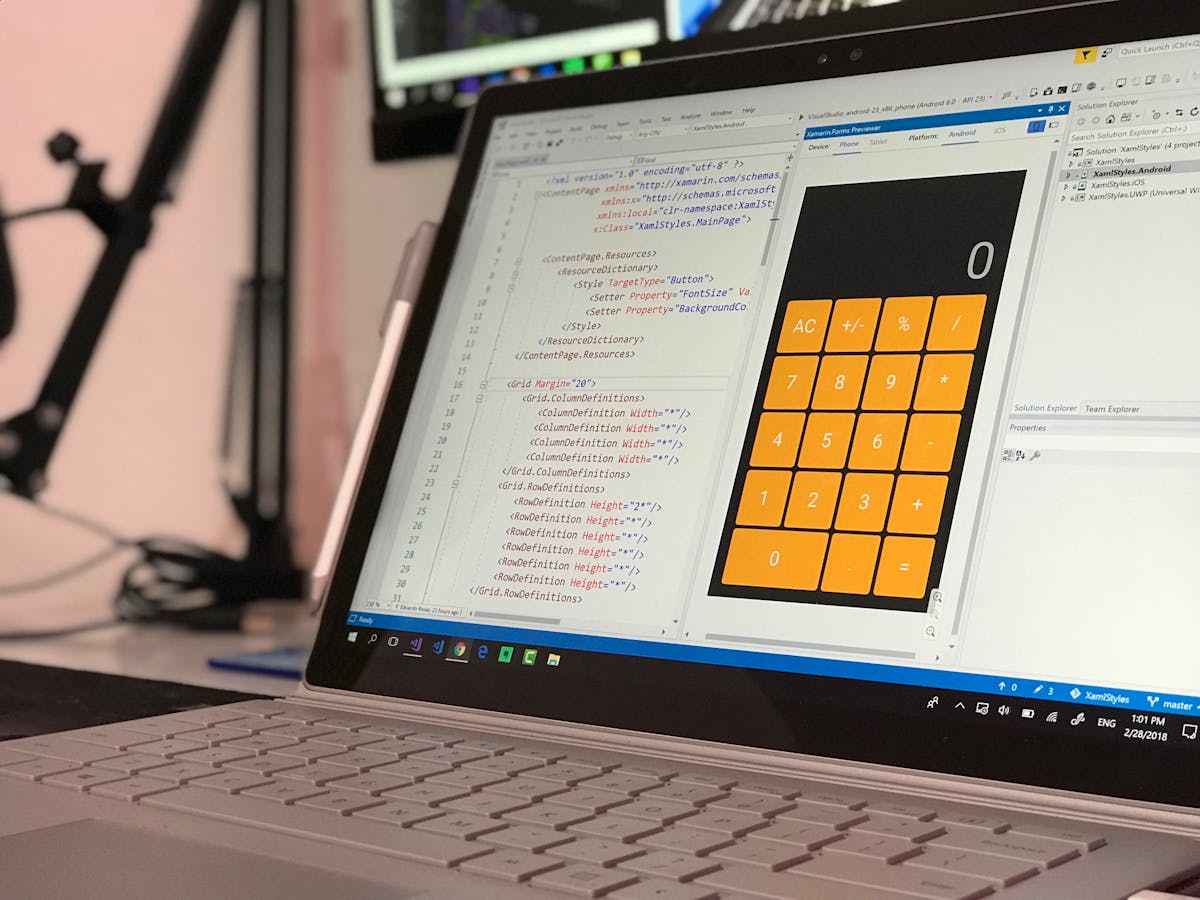Understanding Full-Stack Growth: Why It Is Important for Modern Software Program Engineering
Full-stack development has actually arised as an essential part of modern software application engineering. It encapsulates the capability to browse both back-end and front-end technologies. This twin efficiency boosts collaboration within groups and simplifies project operations (niels denekamp). As companies look for effectiveness and development, the role of full-stack programmers comes to be significantly crucial. What specific abilities and devices do these programmers require to grow in a swiftly developing landscape?

The Role of Full-Stack Developers in Software Projects
The landscape of software growth is varied, full-stack programmers play an essential duty by bridging the void in between front-end and back-end technologies. These professionals have a broad skill established that enables them to deal with all layers of an application, from user interfaces to server-side logic. Their flexibility enables them to comprehend and carry out both client-side frameworks and server-side programs languages, assisting in smoother communication among group members.In software application jobs, full-stack programmers can handling numerous tasks, such as designing data sources, creating APIs, and optimizing user experiences. This complex experience allows them to identify and solve concerns across the entire stack, making certain a effective and natural growth procedure. In addition, their ability to comprehend the full architecture of a task fosters cutting-edge solutions that can enhance functionality. Eventually, full-stack designers are very useful assets, driving projects forward by incorporating varied technologies perfectly.
Advantages of Full-Stack Development for Teams and Organizations
Full-stack advancement supplies significant benefits for teams and companies by cultivating higher collaboration and performance. By making it possible for developers to function throughout both front-end and back-end innovations, full-stack advancement reduces communication barriers in between team members. This versatility enables smoother project shifts and quicker problem resolution, as developers have a holistic understanding of the whole application.Moreover, full-stack designers can add to different stages of the development process, bring about optimized resource allotment and lowered reliance on multiple specialists. This adaptability can increase job timelines, inevitably enhancing performance. Additionally, organizations take advantage of a more cohesive team dynamic, as full-stack programmers can promote expertise sharing and mentorship, promoting a society of continuous discovering.
Vital Skills for Aiming Full-Stack Developers
To succeed in full-stack development, striving designers need to grow a varied set of abilities that span both front-end and back-end modern technologies. Effectiveness in HTML, CSS, and JavaScript is basic for crafting interesting user interfaces. Recognizing structures such as React or Angular improves their ability to build dynamic applications. On the backside, knowledge with server-side languages like Node.js, Python, or Ruby is necessary, as well as expertise of data source administration using SQL or NoSQL systems.Additionally, aiming full-stack programmers need to comprehend version control systems, specifically Git, to properly take care of code changes. They should likewise value Relaxing APIs and exactly how to integrate them right into applications. Familiarity with responsive layout principles assurances usability throughout tools. Solid problem-solving skills and a strong understanding of software program advancement methods are essential for maneuvering complicated tasks. By mastering these abilities, striving developers place themselves for success in the affordable landscape of full-stack growth.
Tools and Technologies in Full-Stack Growth
A selection of devices and innovations play essential functions in the full-stack growth procedure. Front-end development usually involves structures such as React, Angular, or Vue.js, which enable developers to develop vibrant interface. For styling, CSS preprocessors like SASS and tools like Bootstrap streamline the design procedure. On the backside, modern technologies like Node.js, Python with Django, or Ruby on Rails are commonly made use of to take care of server-side reasoning. Databases, consisting of SQL (MySQL, PostgreSQL) and NoSQL (MongoDB), are crucial for information storage and retrieval.Additionally, version control systems, substantially Git, are crucial for collaboration and taking care of code modifications. Programmers usually leverage cloud services such as AWS or Azure to release applications, guaranteeing scalability and dependability. Continuous assimilation and deployment (CI/CD) tools better improve the development process by automating testing and implementation procedures. Jointly, these tools allow full-stack designers to construct efficient, modern applications that satisfy varied user demands.

Future Trends in Full-Stack Growth and Its Influence On the Market
As the modern technology landscape advances, patterns in full-stack advancement are increasingly shaping the future of the industry. One considerable pattern is the expanding adoption of low-code and no-code systems, which equip non-developers and programmers alike to develop applications with very little coding expertise. This democratization of growth increases job timelines and fosters innovation.Additionally, the rise of microservices hop over to here style enables more modular and scalable applications, boosting collaboration amongst teams and boosting deployment processes (niels denekamp linkmedia).Furthermore, the assimilation of expert system and equipment knowing right into full-stack advancement devices is enhancing process, permitting programmers to focus on complex tasks while automating repetitive functions.Lastly, with the boosting emphasis on remote work, a shift towards cloud-based development environments is expected, allowing worldwide cooperation and flexibility. These fads collectively suggest a future where full-stack growth comes to be more effective, easily accessible, and integral to the tech sector's advancement
Often Asked Inquiries
What Is the Typical Salary of a Full-Stack Programmer?
The ordinary salary of a full-stack developer differs significantly based on business, experience, and area size. Typically, it ranges from $70,000 to over $120,000 every year, mirroring the need for versatile innovation professionals in today's market.
Exactly how Lengthy Does It Require To Come To Be a Full-Stack Developer?
The moment required to become a full-stack developer differs extensively (niels denekamp dubai). Typically, people may take six months to two years, depending on previous experience, dedication, and the intricacy of the technologies they pick to discover
Do Full-Stack Developers Work Better in Teams or Separately?
The efficiency of full-stack programmers varies; some prosper in read what he said joint team settings, leveraging varied skills, while others stand out individually, showing self-sufficiency. Inevitably, their efficiency depends upon individual preferences and job needs.
What Industries Employ Full-Stack Developers the Most?
Different markets actively look for full-stack programmers, with modern technology, shopping, healthcare, and finance blazing a trail. These markets value their adaptability, enabling them to successfully manage both front-end and back-end advancement jobs within projects.
Are Full-Stack Developers in High Demand Globally?
Full-stack developers are indeed in high demand worldwide, as their functional ability enables them to browse both front-end and back-end modern technologies, making them important possessions to organizations looking for active and efficient software program development services. The landscape of software advancement is varied, full-stack developers play an essential duty by connecting the gap between front-end and back-end technologies. Their convenience allows them to comprehend and implement both client-side frameworks and server-side shows languages, helping with smoother communication among group members.In software program jobs, full-stack designers are capable of managing various tasks, such as developing data sources, developing APIs, and maximizing user experiences. By allowing programmers to work across both front-end and back-end technologies, full-stack growth reduces communication barriers between team members. To you can look here be successful in full-stack development, aiming designers must grow a diverse collection of abilities that cover both front-end and back-end modern technologies. Various industries proactively seek full-stack designers, with innovation, medical care, financing, and e-commerce leading the means.
Comments on “Auto Coding vs Manual Development: What niels denekamp Thinks Full-Stack Engineers Should Know”